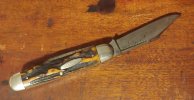waynorth
Dealer / Materials Provider
- Joined
- Nov 19, 2005
- Messages
- 33,346
I agree Charlie - not sure we will know a definitive reason for them but I think I just like the look of them
- and I imagine it was abit more difficult to strike the pull as such in contrast to a nail nick (you can see slight hand struck variation on the pulls in terms of placement even on this knife) - but given all that in Clasussen et al.'s Sheffield Exhibition book (pg 184
) I quote "On the finer knives the nail marks extended through the tangs, as does this one, etc etc" - I guess I was going on this as perhaps a sign of cutler skill and accordingly quality - but like you said who knows


....
Ha Ha!! In 1962, I remember being told by my homeroom teacher, when I started High School (Jesuit School!!), that being able to accept uncertainty is a sign of maturity!!
I think it was in answer to a "why" question that he said was unanswerable!!
Here's a "why" question!! Why did this post-war Primble make it all the way to now(2020), without being used or sharpened!!
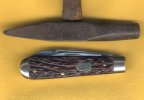
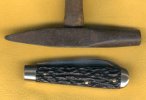
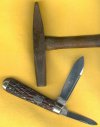
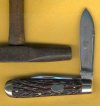
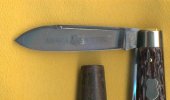
3 5/16" long, beautiful Bone, walk and talk!!











